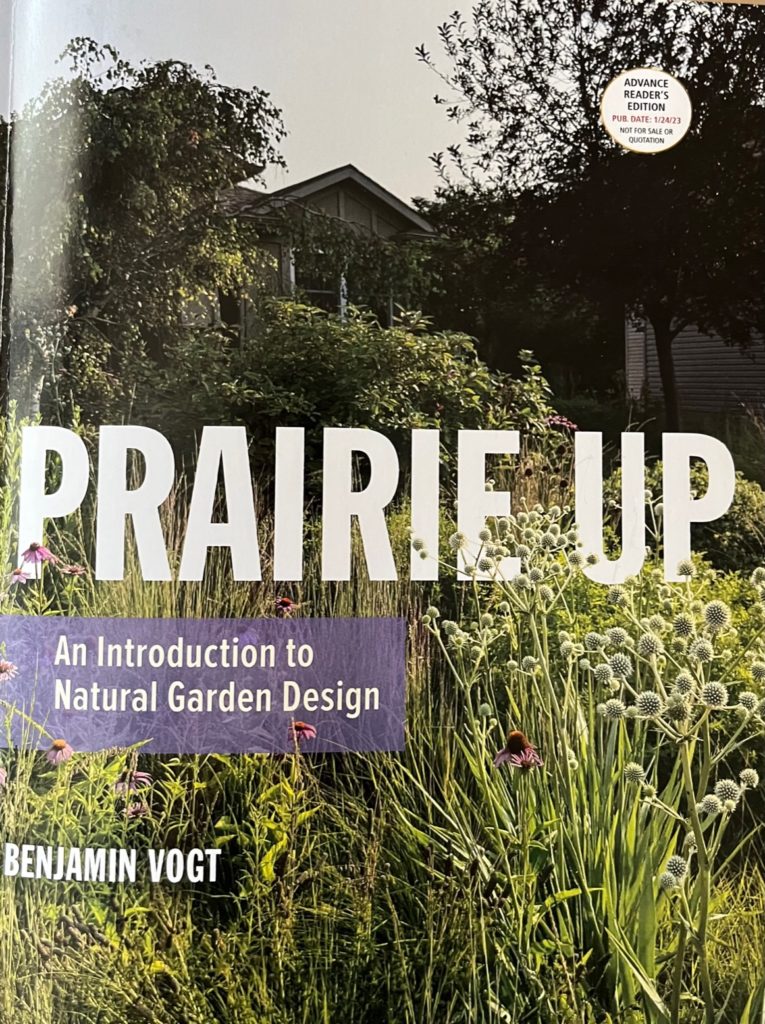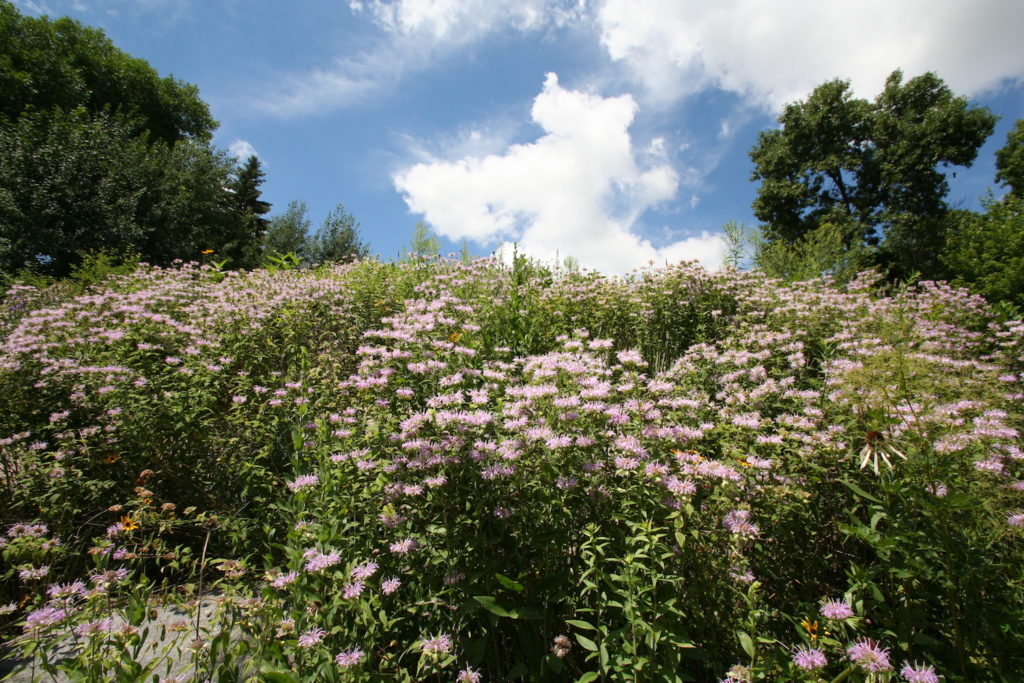Prairies are complicated spaces, filled with plants, insects, mammals and microbial life, all competing and collaborating. Perhaps that is why so many books that I’ve read about creating prairie-style spaces (often called natural garden design or matrix planting) leave my head spinning. Benjamin Vogt’s soon-to-be-released book, Prairie Up: An Introduction to Natural Garden Design, offers prairie garden design and installation advice for folks who want to plant a garden, not pick up a PhD in horticulture.

Don’t misunderstand: He covers all the essentials about why prairies are important and the complex interactions among plants and soil that make up prairies; he covers matrix plantings, ecoregions, plant density and other important details. He sets out clearly issues of habitat loss and its effect on species diversity. But, he does it all in a way that gives gardeners the tools they need to confidently “prairie up” their landscape, whether its a garden bed or an entire yard. He also covers the practical issues of dealing with neighbors or home owners’ associations that may not appreciate all the environmental benefits or the beauty of prairie landscapes.
Forget Zones, Think Ecoregions
Early in the book, Vogt recommends home gardeners get beyond thinking about hardiness zones and sun requirements of plants to consider factors such as ecoregion, plant habit, root zone, method of reproduction and more. As northern gardeners know, a USDA Zone 4 plant that grows one way in the acidic soils of northern New England, grows very differently here. It’s why growing blue hydrangeas in Minnesota is nearly impossible. The U.S. Environmental Protection Agency has compiled ecoregion maps, which take into account soils, geology, hydrology, wildlife and plant communities as well as climate. These can provide gardeners with a more accurate list of the plants that are native to their regions and acclimated to the insects and other animals there.
In discussing plant choices for a prairie garden, Vogt offers step-by-step suggestions for how to pick the best plants for your garden—resources to use, how many plants to pick, ways to think about seasonality and plant “sociability” in your garden. As Vogt notes, “If we understand the region we grow in, and the native plants therein, we will have a much better idea of how to garden and how to manage that garden, even in an evolving climate.”
DIY Prairie
In the second half of the book, Vogt guides readers through the process of designing and installing a prairie garden, beginning with laying out the plan based on bloom times, plant function and how likely plants are to spread in good or bad ways. He offers three basic approaches to designing prairie spaces and covers the benefits and challenges of each.
The book really shines when Vogt talks about installing a prairie garden — how to prepare the ground, layout the site and maintain the garden in both its early days and over the long term. These types of gardens tend to need much less maintenance once established, but have a longer establishment period than typical ornamental gardens where you plunk a plant in, water it and it blooms that season.
The book also includes a few designs for specific sized gardens, frequent plant lists and an excellent resource section for those who want to dig deeper. It’s peppered with inspiring photographs of prairie gardens in a variety of sizes. The book ends with perhaps my favorite section, where Vogt candidly answers questions about butterfly bush, garden cleanup, tools and whether goldenrod is making you sneeze. (It’s not.)
I get a lot of garden books to review, and I don’t always read them cover-to-cover because the information is repetitive for me. This one I read all the way through and marked it up to boot. If you are interested in growing a garden that reflects where you live and benefits the creatures and plants around it, pre-order a copy of Prairie Up. If you pre-order now, there is a chance it will be delivered by Christmas. If not, it will be a fabulous book to curl up with during the long winter that follows!

OOOH thanks for reviewing this! I follow him on Instagram and was curious about this book.